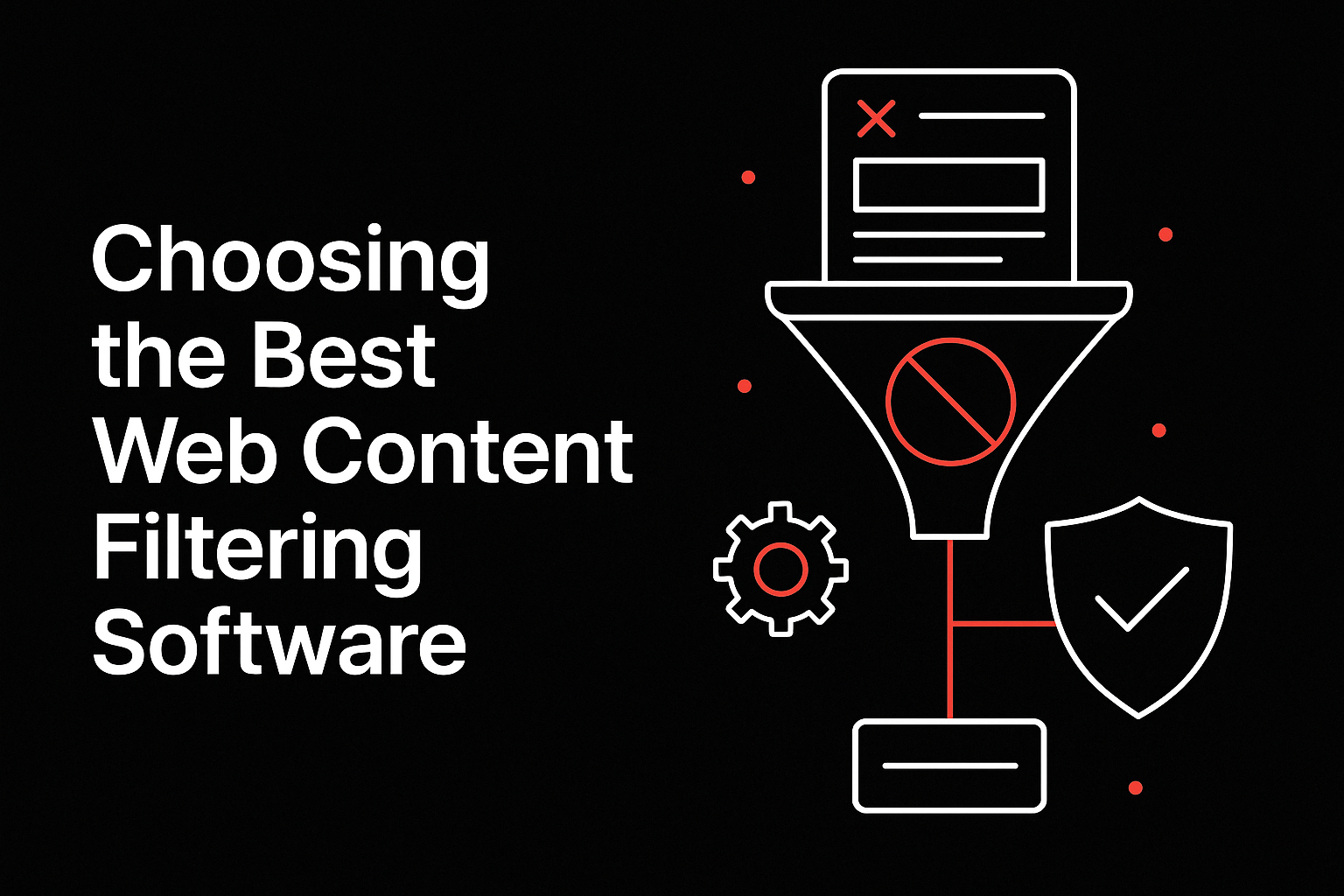Choosing the Best Web Content Filtering Software: Top Features to Look for

Strong 8k brings an ultra-HD IPTV experience to your living room and your pocket.
The internet is an essential business tool—but it's also a minefield. From phishing sites and malicious downloads to time-wasting content and compliance risks, unfiltered access can quickly turn into a liability.
That’s why web content filtering software has become a standard part of modern IT strategy. It gives organizations the ability to control which websites users can access, reduce exposure to threats, and enforce acceptable use policies without slowing down business.
But with dozens of solutions on the market—each promising better protection, smarter controls, and easier management—how do you choose the right one?
This guide cuts through the noise. We’ll walk through the key features that matter, what to avoid, and how to evaluate content filtering software that aligns with your organization’s security goals, compliance needs, and user expectations.
What is a web content filtering software?
Web content filtering software is a tool that controls and restricts the websites or online content users can access through a network or device. It's primarily used to block harmful, inappropriate, or non-work-related content to improve security, compliance, and productivity.
What It Does?
Web content filtering software:
- Blocks access to malicious websites (phishing, malware, spyware)
- Filters inappropriate content (adult sites, violence, gambling)
- Limits non-productive browsing (social media, streaming, gaming during work hours)
- Enforces compliance policies (CIPA, HIPAA, ISO 27001, etc.)
- Monitors and logs web activity for audits and investigations
How It Works?
Content filtering software typically uses:
- URL filtering: Blocks entire domains or specific URLs.
- Keyword filtering: Scans pages for restricted words.
- Category filtering: Groups websites by category (e.g., "adult content," "news," "social media") and applies rules accordingly.
- Blacklist/Whitelist: Admins define what to block or allow.
Where It's Used?
- Businesses: Prevent data breaches, reduce distractions, enforce IT policies.
- Schools: Protect students and comply with regulations like CIPA.
- Healthcare & Finance: Safeguard sensitive data and meet strict compliance requirements.
Choosing the right web content filtering software can be the difference between a secure, productive workspace and one vulnerable to distractions and threats. From blocking malicious websites to enforcing internet usage policies, these tools play a vital role in today’s hybrid work environments. Let's explore the key features to consider when selecting a solution that fits your business needs.
1. Identify Your Business Needs
Start by outlining what you want to achieve with web filtering—whether it's boosting employee productivity, improving cybersecurity, meeting compliance, or managing bandwidth usage. This helps narrow down software with features tailored to your goals.
2. Look for Granular Control
The best web filtering tools offer customizable filtering based on:
- Website categories (e.g., gambling, adult, social media)
- Specific URLs or keywords
- User roles or departments
- Granular controls let you apply different rules for different users, ensuring flexibility.
3. Ensure Real-Time Threat Detection
Opt for software that includes real-time threat intelligence to block phishing sites, malware, and other cyber threats instantly. AI-powered filters are particularly effective in detecting new or evolving risks.
4. Evaluate Reporting & Analytics
Choose a solution with detailed logging and reporting features. Visibility into browsing activity helps monitor user behavior and detect anomalies, supporting both IT operations and HR policies.
5. Check for Remote & BYOD Support
With hybrid work now the norm, your software should work seamlessly across office networks, remote devices, and BYOD setups. Cloud-based solutions or those with endpoint-level filtering provide consistent protection regardless of location.
6. Compliance Readiness
If you're in a regulated industry (e.g., finance, healthcare, education), make sure your filtering tool supports compliance with standards like HIPAA, PCI-DSS, CIPA, or GDPR.
7. Scalability and Integration
Look for a web filtering solution that can grow with your organization and integrates well with existing systems like UEM, MDM, or endpoint security tools. Scalefusion Veltar, for instance, offers built-in web content filtering as part of a broader security framework—ideal for businesses seeking unified control.
8. Ease of Management
A user-friendly dashboard and centralized management are crucial for IT teams. The ability to set policies, view reports, and push updates remotely reduces administrative overhead.
Final Thoughts
Now that you know what to look for in a web content filtering solution, it’s time to take action. Start by auditing your current internet usage policies and identifying the biggest gaps. Then, match your needs to the key features we discussed—security, customization, reporting, and scalability. The right tool isn’t just about filtering—it’s about enabling smarter, safer online access across your organization.
The best web filtering software for your business is one that balances security, flexibility, and ease of use. Prioritize solutions that can adapt to your company’s scale, user needs, and regulatory requirements.
Want to explore a web filtering solution built for modern businesses? Check out Scalefusion Veltar—a unified platform offering endpoint management, compliance tools, and web content filtering in one.
Note: IndiBlogHub features both user-submitted and editorial content. We do not verify third-party contributions. Read our Disclaimer and Privacy Policyfor details.



